Fun Fact: In Buenos Aires the double L, “ll”, does not make a “y” sound like I learned, oh no, it makes a “sh” sound. We learned this yesterday when we went to purchase empanadas. According to the sign there were three kinds to choose from, jamon y queso, carne and pollo. I ordered 2 jamon y queso and 1 “poy-yo” (the way I had been taught to pronounce pollo and have used successfully many times). The man at the counter boxed up our jamon y queso empanadas and turned to see what else I wanted, “uno con poy-yo” I said. He just looked at me with a smile and shook his head like “oh you, poor dumb gringo, trying to speak to me in Spanish” and told me the choices again, very slowly “jamon y queso, carne y po-show” I looked at him in frustration- the sign said there was a pollo empanada, why wouldn’t he give me one? Finally Nick figured it out and stepped in, the voice of reason, “Uno con po-show”, this seemed to do the trick and we got our chicken empanada. Which also means that we have been mispronouncing the popular type of restaurant, the Parilla (actually pronounced “parisha”) and several street names like, Callao and Lavalle (actually, Cash-ow and Lava-she, of course).
The BA Walking Tour
This has been just one of the things we have learned the hard way in Buenos Aires. Some were no big deal, like learning that “cafe con leche” actually means a latte (you have to order a cafe and wait for them to ask if you want it negro o con leche- it makes a huge difference). But some are a little bit bigger like learning that the subte line near us has new hours (we had previously read that it had ran until 11pm) thanks to the new air conditioned cars it was getting. We took a ferry out Saturday morning to Colonia to visit Uruguay and planned to get back to BA around 9pm, giving us plenty of time to catch the subte and get home. However, the new subte hours had the trains closing at 1pm on Saturday. A rotten surprise when we got back from Colonia, tired and cold and ready to catch a ride home. Instead, we embarked on the 4 mile walk home. Fortunately, Buenos Aires is a lively city at night and we were treated to some excellent people watching on the walk home.
We have also learned some things the easy way- today we took a walking tour of downtown Buenos Aires with BA Free Tour. They were a fabulous tour company and they were free- all they ask is that you tip within your budget. We had a wonderful tour guide, a Portena named Maggie who was very knowledgeable and answered every question we had, from shopping questions to questions on the blue rate. Our tour was fairly small, but very diverse- there was a young couple from Utah, a woman from Kenya, a couple from Brazil, a mother and her two daughters from Ireland, a man from Singapore, a couple from Australia and a man from Palestine. We started at the Plaza del Congreso where we saw the Congreso building and an old, famous coffe house, Cafeteria Del Molino. The coffeehouse was once a beautiful building and famous for its elegance and parties, but since 1997 has been abandoned. The government is trying to buy it and restore it (and has been since 1997) but the problem is finding new homes for the homeless people who are living in it. The government cannot throw the people living there out, they must provide a new home for them to go to. This creates the additional problem of finding a place to move the people who live there, and for everyone who moves out, a new person moves in… a never-ending cycle which is why nothing has been accomplished in the last 20 years.
Next we saw “El Pensador” otherwise known as The Thinker! Apparently, Rodin made three copies of The Thinker- one is at the Rodin Museum in Paris, one is in Philadelphia and one is the Plaza del Congreso in Buenos Aires! (Seeing this puts me at two of the three originals- the only one I am missing, oddly enough, is the one in Philadelphia!) Maggie was very proud of that statue and pointed out that if you go to see the one in Paris you must wait in line to buy a ticket, then get into the museum and crowd around it with a bunch of people all trying to take pictures with it, but in Buenos Aires, its just out in the middle of a park!
Our walking tour took us from Plaza del Congreso to the Casa Rosada- the congress building to the Presidents office- along the beautiful Avenue de Mayo. Avenue de Mayo has incredible architecture and Maggie’s version of why went something like this “Back when Buenos Aires was younger there was a group of people who had a problem- their problem was that they had too much money! And what do you do when you have too much money? You diversify! All these people owned land, but wanted to get into real estate, so they brought over architects from Europe to design and build along Avenue de Mayo.” Another Fun Fact: all the buildings along Avenue de Mayo are 67 meters high. This was intentional as the buildings were built during a time when the style was for men to wear hats and 67 meters was considered respectably tall, but not so tall that when a gentleman looked up at the buildings his hat would fall off.
Our nest stop along Avenue de Mayo was the Palacio Barolo- this building was the only exception to the 67 meters rule as it was built for an entirely different purpose. It was built after the first World War when the Italian architect was one of a few who was concerned that Europe would fall and the only way to preserve the body of Dante Alighieri, the writer of the Divine Comedy, was to bring it to Buenos Aires, so he built this amazing monument to Italian architecture and Dante. Built with Dante’s “Divine Comedy” in mind, it is 100 meters tall to represent the 100 cantos. The 22 floors are divided into 3 portions- the bottom being hell, the middle considered purgatory and the top considered heaven- all in accordance with Dante’s work. It was the highest building in South America when it was finished and incredibly beautiful.
Next, we stopped at Cafe Tortoni, the oldest coffee house in Buenos Aires and one of about 50 that the government has declared famous by law- essentially, this means that they help ensure that these historic coffeehouses are able to survive. This is where we learned that it is important to order coffee “cortado” which is cut with milk. Good to know!
Argentina has 2 independence days, the 25th of May and the 9th of July. May 25th 1810 was when Argentina decided it was going to be independent from Spain as the Spanish King had just been removed by Napoleon and the people of Argentina were beginning to wonder “if we are supposed to be ruled by the king, and there is no king, just who are we following exactly? So, they removed the Viceroy from office and became independent. However, they were still a small and not strong enough so they could not officially declare Independence until July 9th 1816. Our next stop was in the Plaza del Mayo where we learned much more about the city of Buenos Aires. We saw the original government building, a very white building which due to the massive amounts of graffiti in the city, has to be painted every two weeks. We also saw the church that the liberator of Argentina is buried in, it was also the old church of the Pope back when he was Papa Francisco, before he was Pope!
Plaza del Mayo has some very sad history as well. For a 7 year period in the 1976-1983 Argentina was no longer a democracy and was ruled under a dictatorship. Many people did not like this and rebelled. In order to suppress the rebellion people were “disappeared” heading home from work or on their way to school they were kidnapped, drugged and often killed. Not just men and women, but sometimes whole families. The men and women were often killed but the children lived. Sometimes a pregnant women would be taken and allowed to have her baby. The children were then adopted by the military families. This has created a very sad problem. Grandparents whose children were taken have hope that their grandchildren are still alive and are trying to find them by reaching out to people who were adopted in that time and encouraging them to have DNA tests. Children who were adopted in that time frame have grown up with one family and are often reluctant as if they find that they are related to a disappeared person, their father could end up in court or jail.
We proceeded to the Casa Roasado, the President’s office. It is a lovely pink color and there are two theories as to why it is pink: 1) It was at one time two buildings and when they joined the buildings to make one mega-building they needed something waterproof and it was found that lime, beef tallow and cow’s blood was just the ticket and it was the cow’s blood in that mixture that made it pink. 2) When the house was built, there were two political parties and they were represented by different colors, one was red, the other was white and when Casa Rosada was built, the two colors were mixed to encourage cooperation.
To get to our final stop we had to cross the Avenue 9 de Julio, Maggie was proud to inform us that it is the widest avenue in the world at 140m across. There was some debate that Brazil recently built the widest avenue at 250m, but on closer examination, the Argentines realized that Brazil’s avenue was not really an avenue, but actually a highway and therefore did not count.
We stopped at the Obelisco de Buenos Aires, a 67m tall obelisk built to commemorate the 400th anniversary of the first foundation of the city. Right across from the obelisk stands a tall office building and on the top of that office building there is a house… because, why not?
It was an incredible tour and a very fun and informative day!
Next post: Puerto Cerrados and Other Delicious Eats in BA
Previous post: Cambio! Cambio! The Blue Rate in Argentina
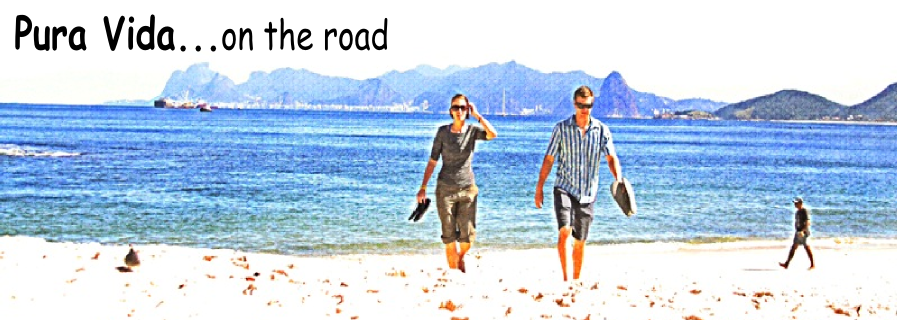
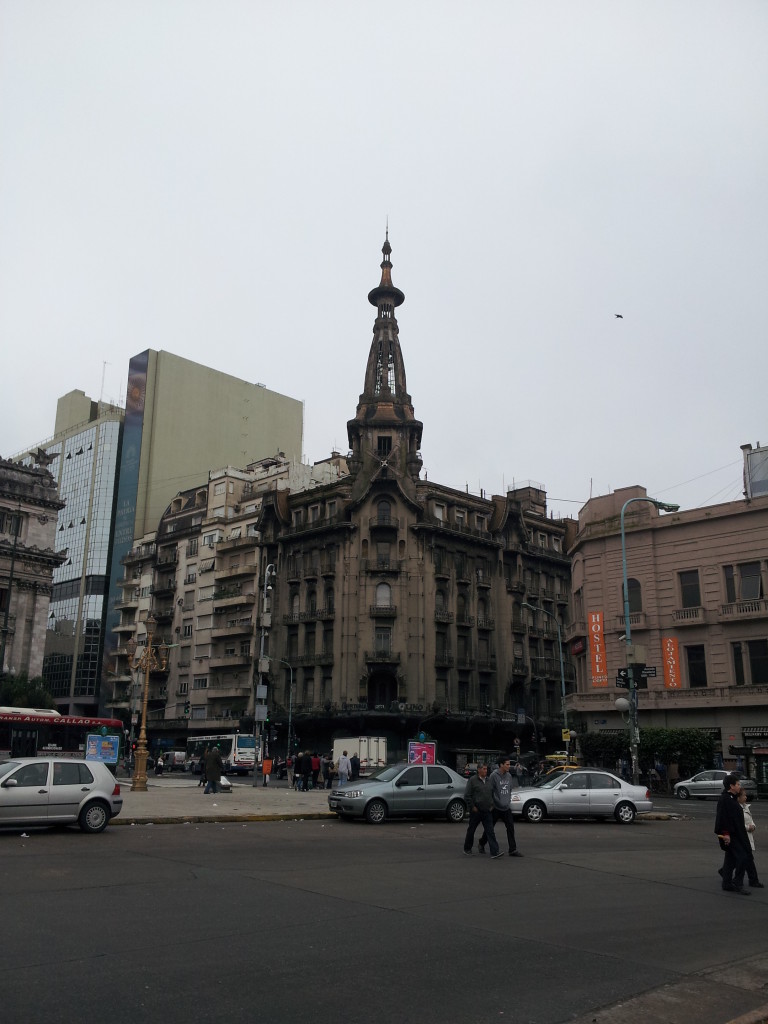
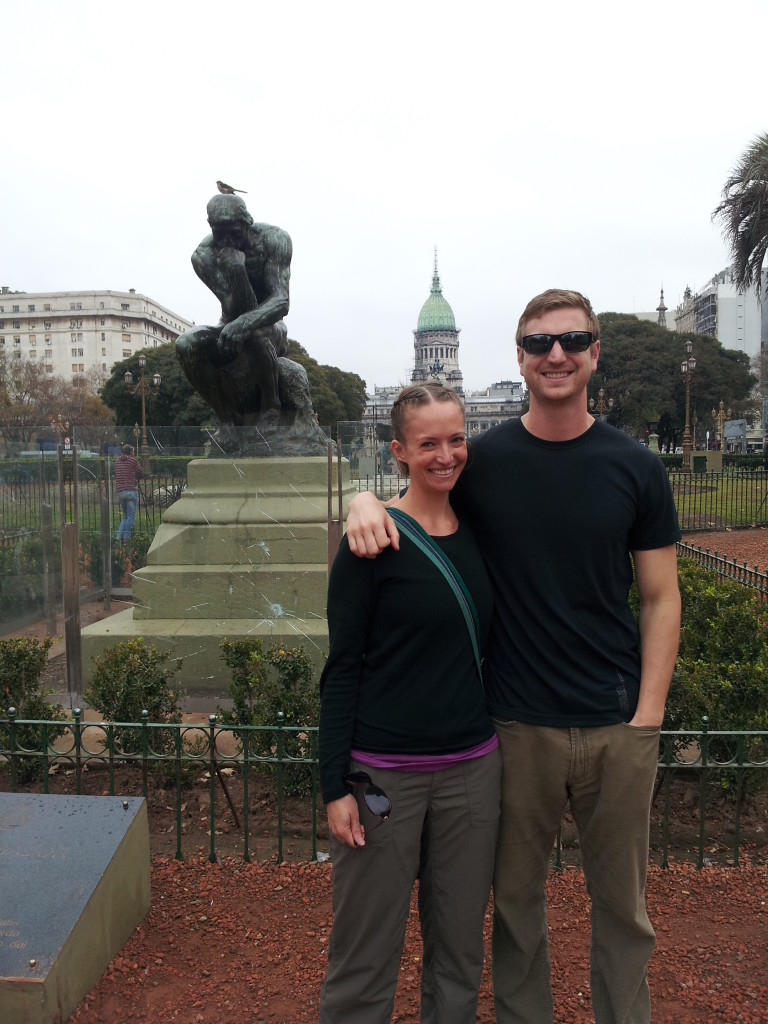
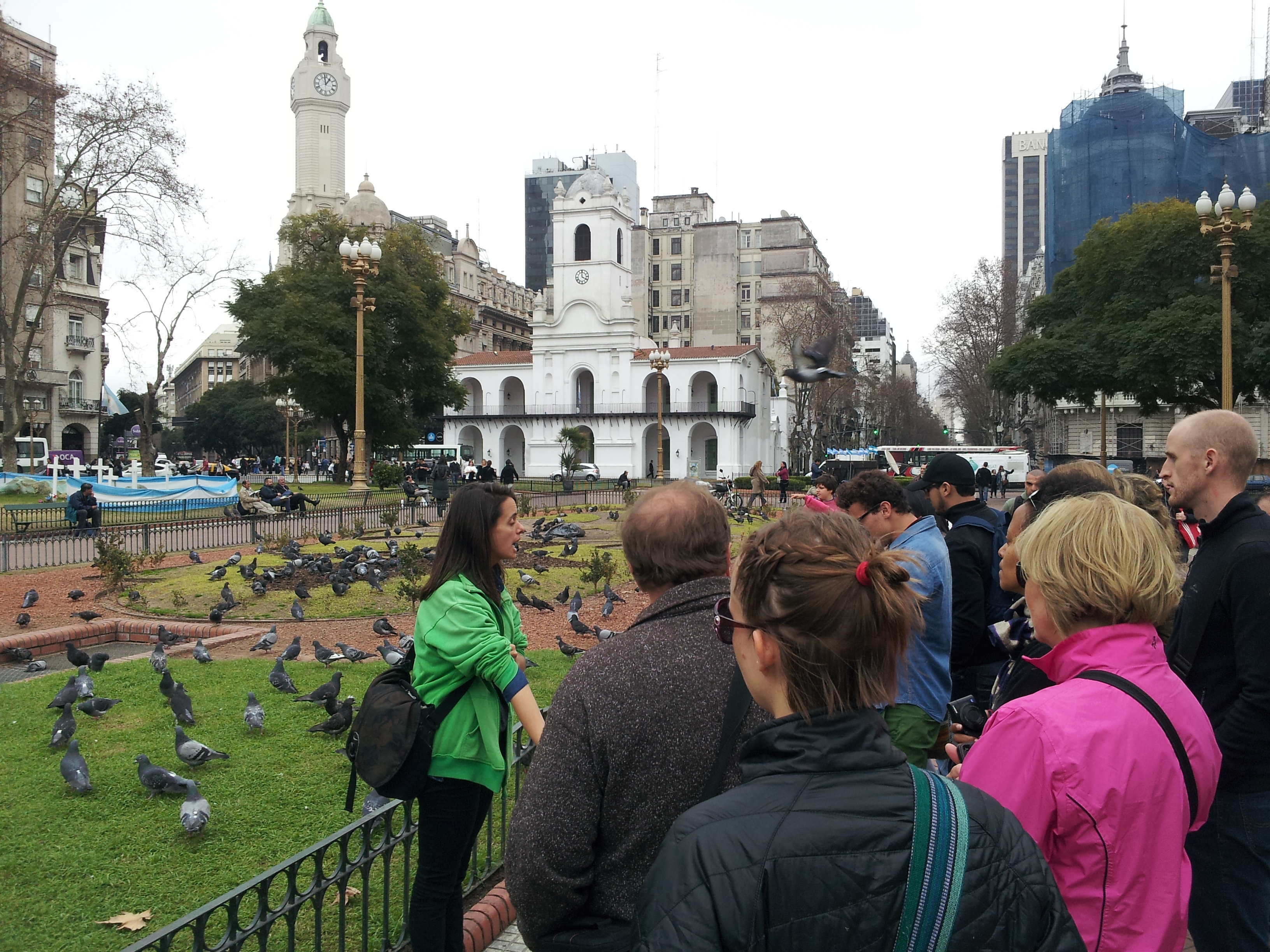
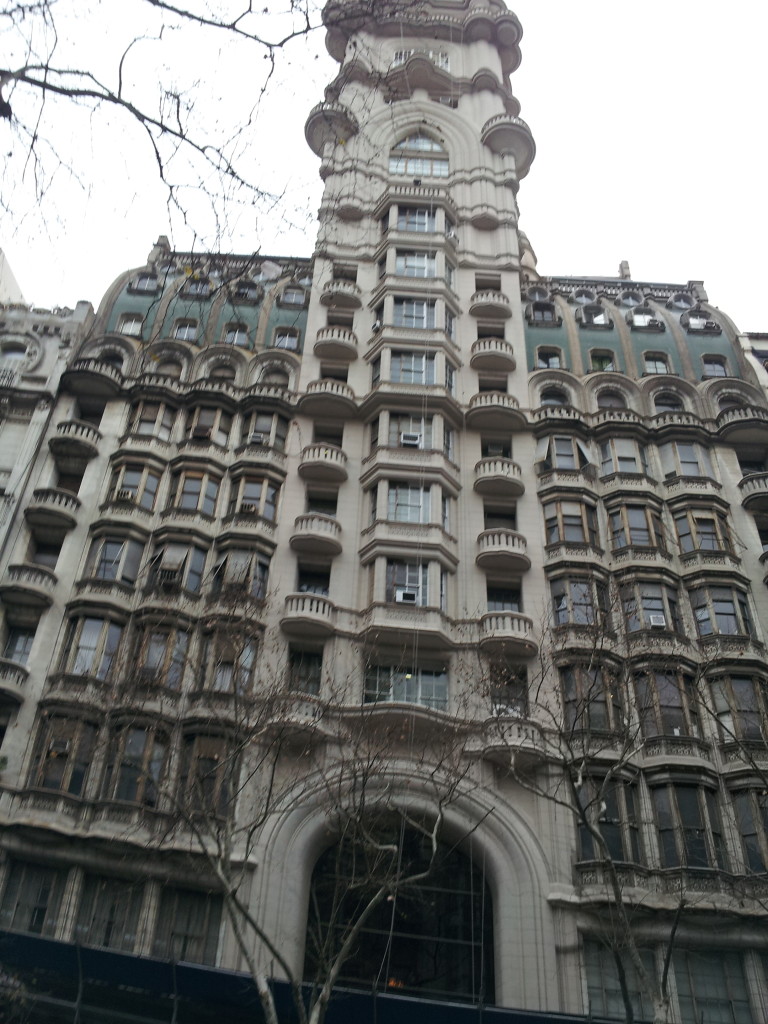
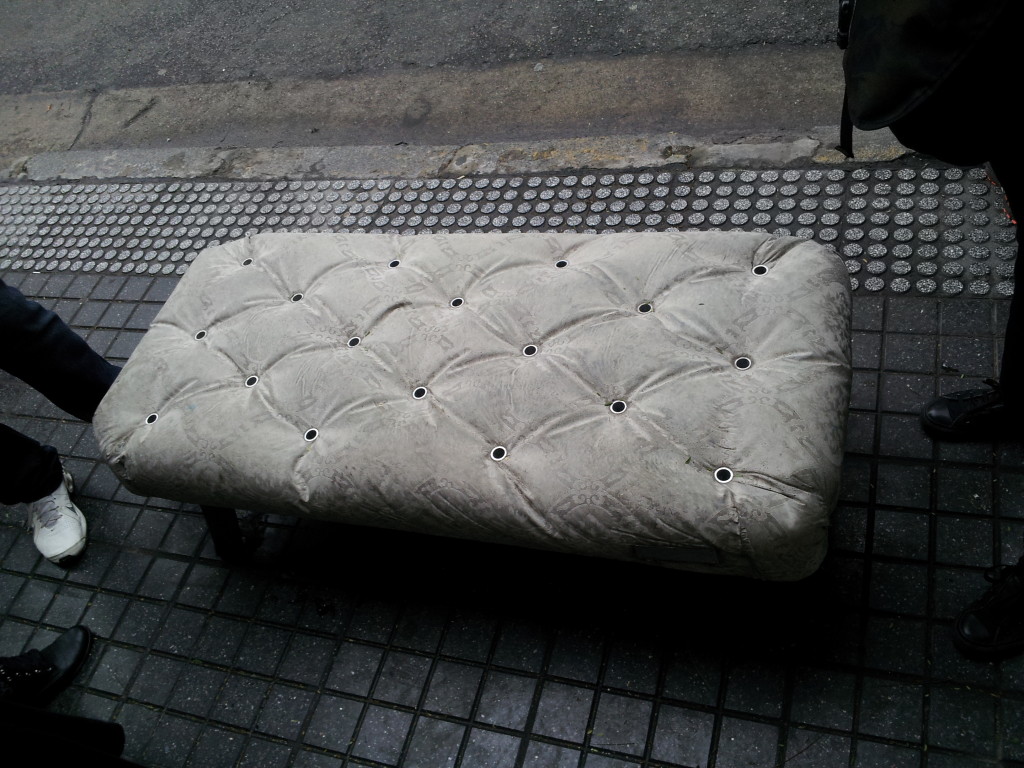

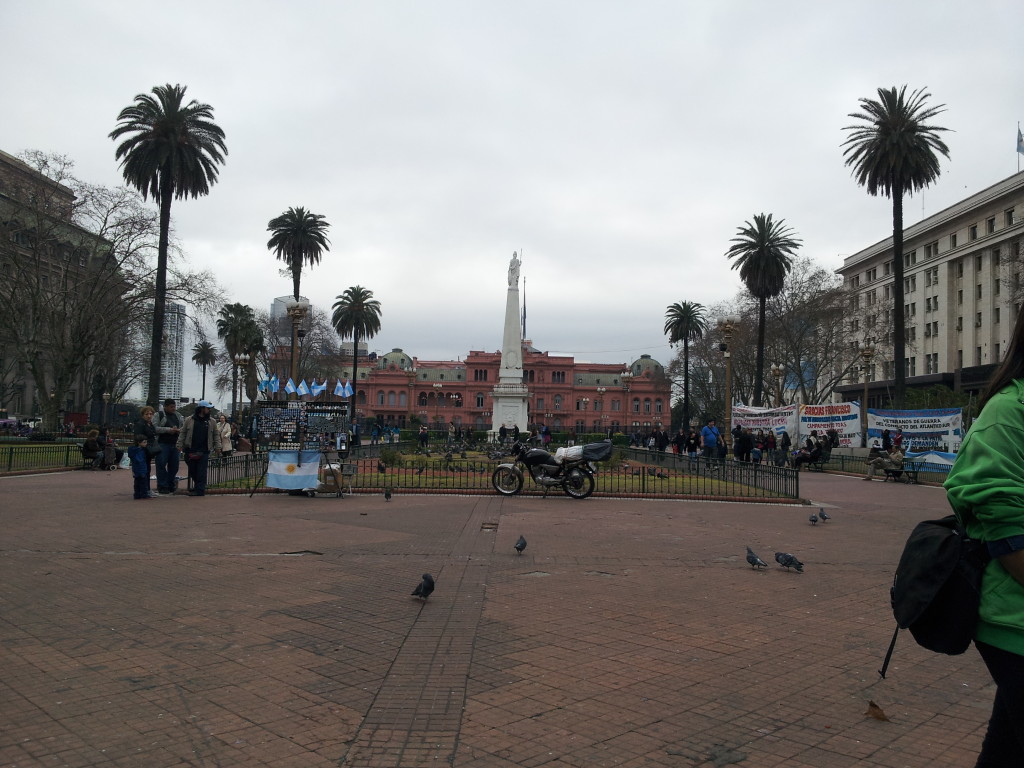
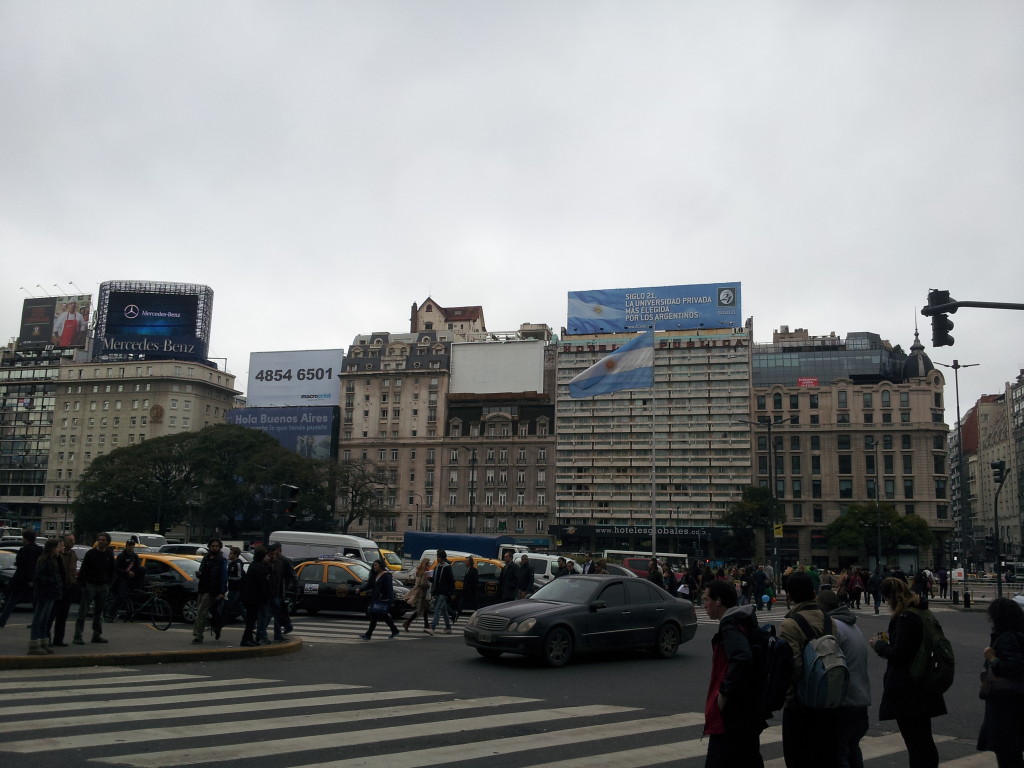
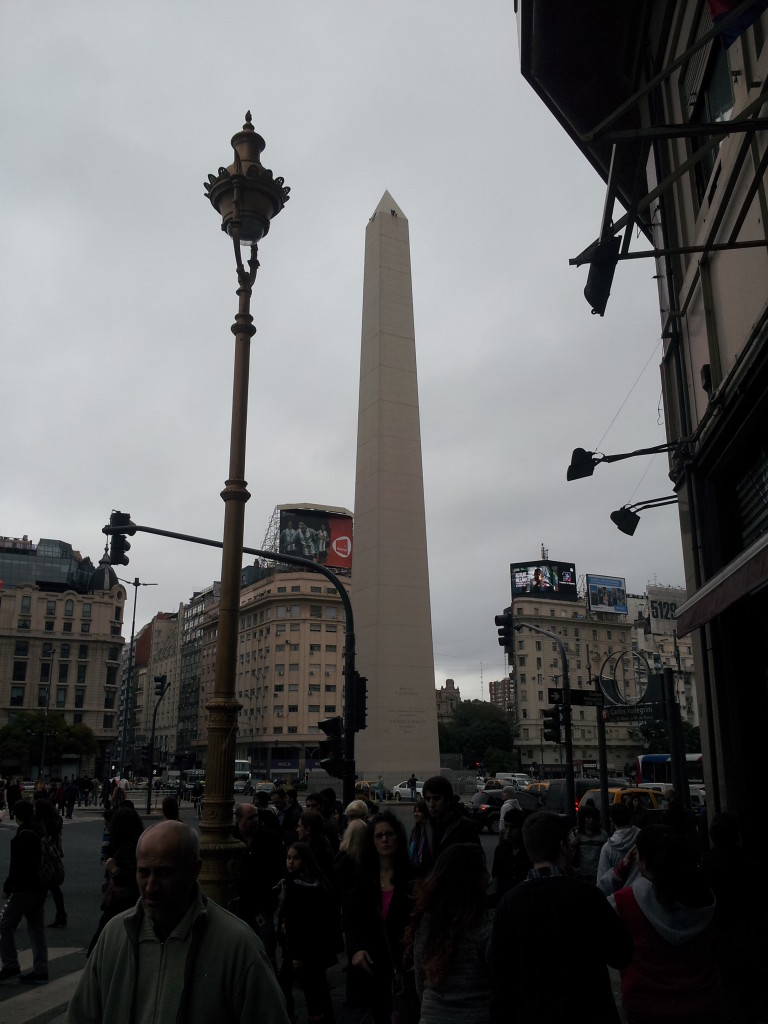
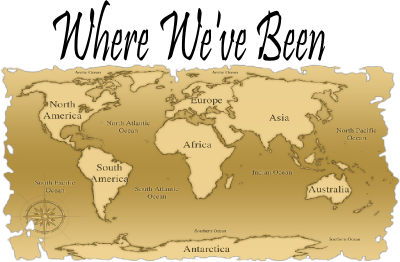
Comments on this entry are closed.